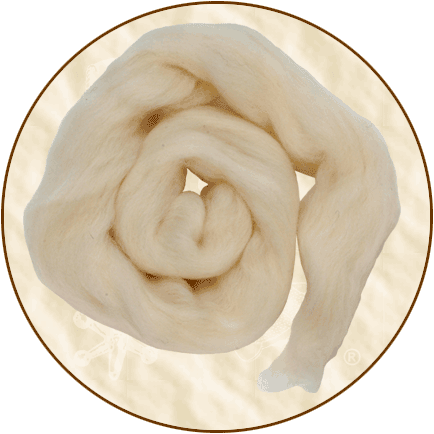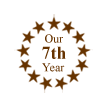.
Continued from product description
on Home Crafts' Page Seven...
Historical
Background: The first sheep did not produce wool. Modern
sheep evolved from "mouflons," which were wild-grazing
animals from the Mesopotamian area. The first "merino"
sheep possibly appeared in Spain over 3,000 years ago, but tests
show that a piece of "woollen" cloth found in Denmark
was made over 3,500 year ago. Other wool cloth was found in Greece
and Babylon, which is said to mean "Land of Wool."
Sheep were first bred for their meat and hides. Today, sheep
are bred primarily for their wool. There are many breeds of sheep
which produce nice wool. Some of these are Corriedale, Cheviot,
Cotswold, Lincoln, Merino, Romney, Southdown, and Suffolk. Actually,
wool comes in a variety of natural colors: pure white, off-white,
yellowish-white, silver to charcoal gray, jet black, tan, or
reddish brown. Of course, wool can be dyed other colors after
it is either washed or spun.
Before wool can be spun into yarn, it must go through several
processes. The first process is to scour the grease, dirt, lanolin
and squint (dried sheep sweat) out. After the wool is washed,
it is removed from the wash water and spread out to dry. Next,
a time-consuming process called "picking" or "teasing
the fleece" is done to pick out the tangles or any other
leftover substances. Then, these cleaned fibers need to be combed
with carding brushes to align the fibers and make the lengths
straight. The wool is now ready to spin after all this work.
One can twist the wool fibers between the thumb and forefinger
or use a drop spindle to spin yarn. Medieval spinners also used
a "distaff" to hold the fibers of wool, which were
then twisted by hand before the thread or yarn was wound on a
spindle. A distaff, which is held under the arm, is a wood stick
about 3-feet long that has a fork or ornate comb at one end to
hold the wool fibers.
American colonists began raising sheep in Jamestown, Virginia,
even though England tried to control the trading of wool with
rigorous laws. These were not the first sheep in the Americas.
Columbus took sheep to Cuba and Santo Domingo on his second voyage
in 1493. Cortez took flocks of sheep into what is Mexico and
Southwestern United States where his expedition introduced sheep
to Navajo tribes -- who, centuries later, became famous for their
Navajo rugs and other types of weavings. In the early 1800s,
Merino sheep were brought to America from Spain to improve the
domestic stock.
Wool is used to make many articles -- from knitted sweaters,
mittens, and hats to woven blankets, rugs, and fabric.
Some wool terms are: "raw fleece" (wool that just
been sheared from the sheep before it is washed), "a single
fleece" (the wool that is produced by one sheep in one year
and can weigh between four and twelve pounds), and "wool
top" (a long, continuous strand of the longest wool fibers).
Fun
Fact: Presidents George Washington and Thomas Jefferson
imported sheep from England and wore wool suits at their inaugurations.
Kool-Aid
Dye Recipe: This recipe is reprinted with the permission
of Chris Gustin, Homestead
Weaving Studio, Nashville, Indiana.
Use 1/2 to 1 pack* of non-sugared Kool-Aid or similar product.
(*Dye intensity depends on flavor!) Dissolve in 2 quarts of water
and bring to a simmer in enamel or Corningware pan. Add 1 cup
vinegar and stir. Add wool roving, but do not agitate (just push
it under the water). Simmer gently for about 15 to 20 minutes
until water is clear or nearly clear. Remove from heat. Let cool
in pan until cool enough to handle, then drain and rinse gently
until water runs clear. Dry on towel, turning a couple times
a day until dry. For fun, try sprinkling different colors on
to the wool roving once it's in the vinegar bath. Sprinkled colors
will strike and bloom. Remember red plus blue plus yellow equals
brown. Try to keep the colors separated. Similar effects can
be achieved with Easter Egg dyes.
Please see our Wool Drop Spindle
Only (4602) for the historical background of drop spindles
for wool.













